I discovered Breeze mat rush (
Lomandra longifolia ‘LM300’) several years ago, and it quickly became, and remains, one of my top go-to plants. It is remarkably versatile, tough as nails, thrives in sun or shade, has low water needs and is virtually maintenance-free. Plus, it keeps its good looks year-round, even withstanding temperatures down into the high teens. It’s dramatic when planted in masses or in combination with plants that share the same water and site needs.
 Botanical name: Lomandra longifolia
Botanical name: Lomandra longifolia ‘LM300’ (aka ‘Tanika’ in Australia)
Common names: Breeze mat rush, dwarf mat rush
Origin: Australia
Where it will grow: Hardy to 15 to 20 degrees Fahrenheit, or minus 9.4 to minus 6.7 degrees Celsius; (USDA Zone 8; find your zone)
Water requirements: Low; don’t overwater
Light requirements: Sun or shade
Mature size: 2 to 3 feet tall and 2 to 4 feet wide
Benefits and tolerances: Drought-tolerant; deer-resistant; tolerates sun and shade; handles coastal conditions
Seasonal interest: Attractive foliage year-round
When to plant: Preferably fall but may vary by region
Distinguishing traits. Breeze mat rush is a sturdy, compact and evergreen plant with fine, long arching blades. In spring, tiny yellow-orange flowers that smell faintly of honey rise up on spikes.
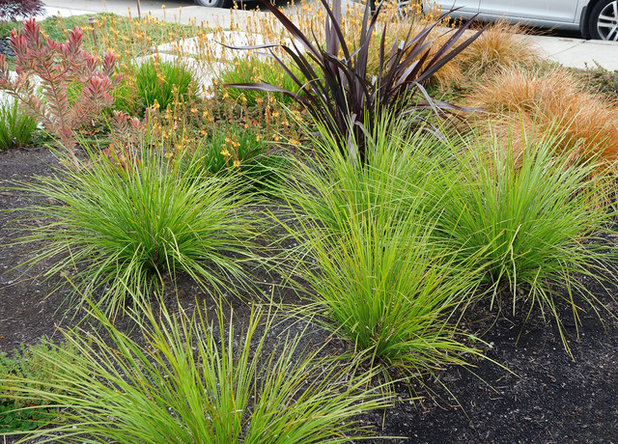
Dig Your Garden Landscape Design
Breeze mat rush is planted here with ‘Black Adder’ flax (
Phormium cookianum ‘Black Adder’), ‘Hallmark’ bulbine (
Bulbine frutescens ‘Hallmark’)
, orange New Zealand sedge (
Carex testacea)
and ‘Jester’ leucadendron (
Leucadendron ‘Jester’).
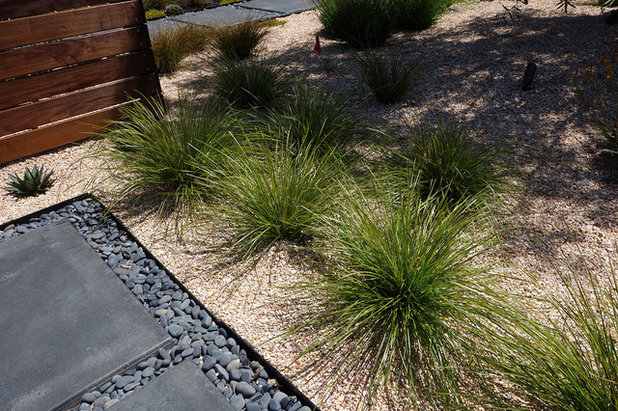
Dig Your Garden Landscape Design
How to use it. Use Breeze mat rush wherever a grassy texture is desired. It’s a standout as an edging plant, in dry borders, mass-planted for dramatic visual impact or used in combination with other drought-tolerant plants. Its versatility lends itself to contemporary landscape designs as well as more free-form, natural gardens — and every situation in between. It’s perfect for dry, hot slopes or even in a shaded corner. Breeze mat rush happily thrives in sun or shade, adding endless possibilities in the landscape.
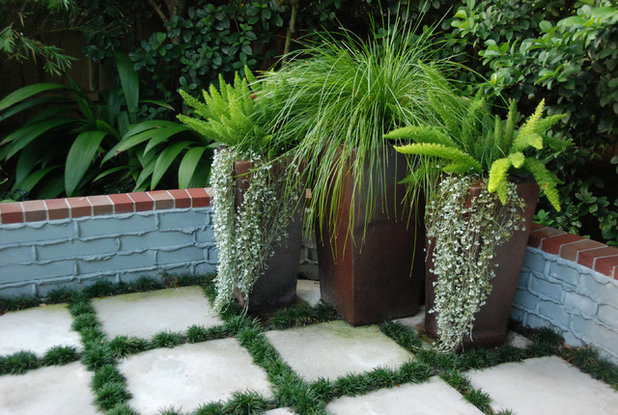
Hortus Oasis
Containers, especially in hot, sunny regions, can be hard on many plants. Not so for Breeze mat rush. It is well-suited to pots, and it mingles beautifully with plants that possess a variety of contrasting textures and tones. This container garden in Florida also features foxtail fern (
Asparagus densiflorus ‘Myers’) and the cascading ‘Silver Falls’ dichondra (
Dichondra argentea ‘Silver Falls’).
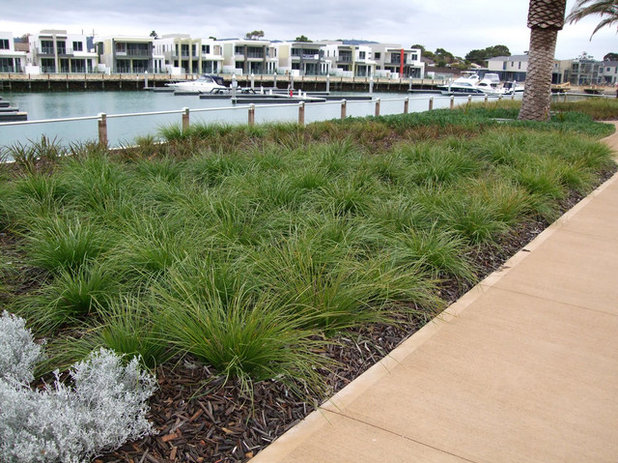
Breeze mat rush is an excellent alternative to water-thirsty lawns and is quite striking when mass-planted. As it matures, its long leaves can spread several feet in a weeping habit, creating a dense cover that shades and cools the soil. Shaded, cooler soil equates to even lower water needs and less weed growth.
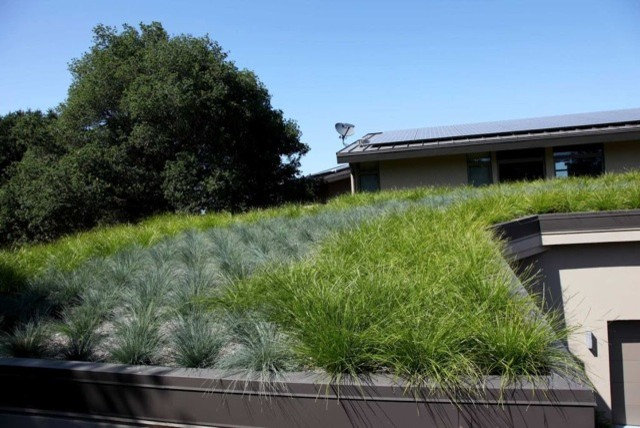
Susan Ballinger Garden Design
Breeze mat rush is also an ideal choice for green roofs. On this roof, it grows with ‘Seascape’ mat rush (
Lomandra confertifolia ‘Seascape’), a smaller variety with finer, blue-gray foliage that is another one of my favorites.
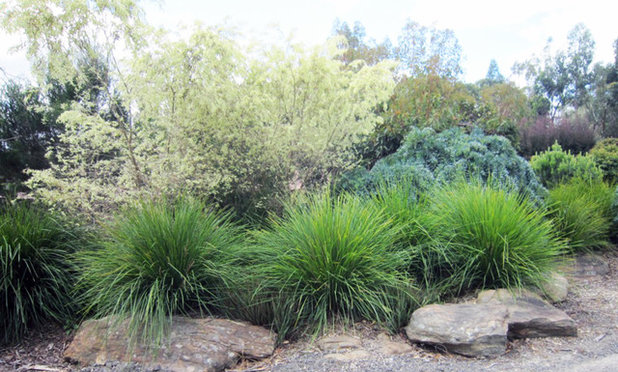 Planting notes.
Planting notes. Breeze mat rush grows best in well-drained soils but can tolerate both sandy and clay soils. It withstands coastal wind, salt and other difficult environments. In fact, it’s so tough that it’s widely used in freeway median strips in Australia — now that’s a testament to its resilience. In shade, it tends to take on a brighter green tone and often appears a bit more lush.
Trim back the spent flower stalks to keep it looking its best year-round.
Unlike many grasses,
Breeze mat rush
doesn’t need to be cut back annually, and some growers have stated that pruning is required only every three to four years, or more. I planted
Breeze mat rush in my personal garden four years ago in a partial-shade location — it has never been trimmed and still looks great. No wonder it is named Breeze.
See other ways to use ornamental grasses in the landscape
Browse more great design plants





